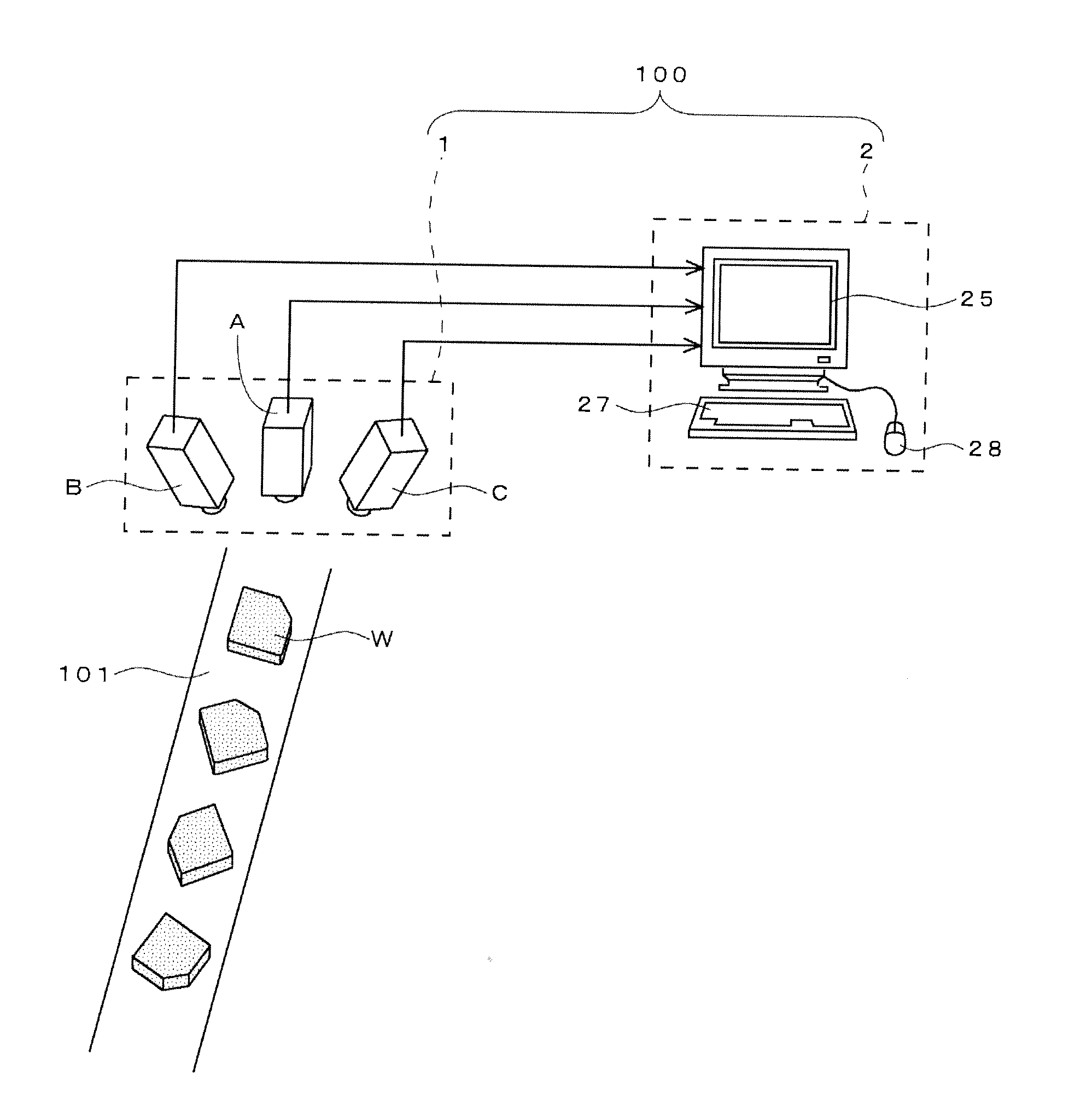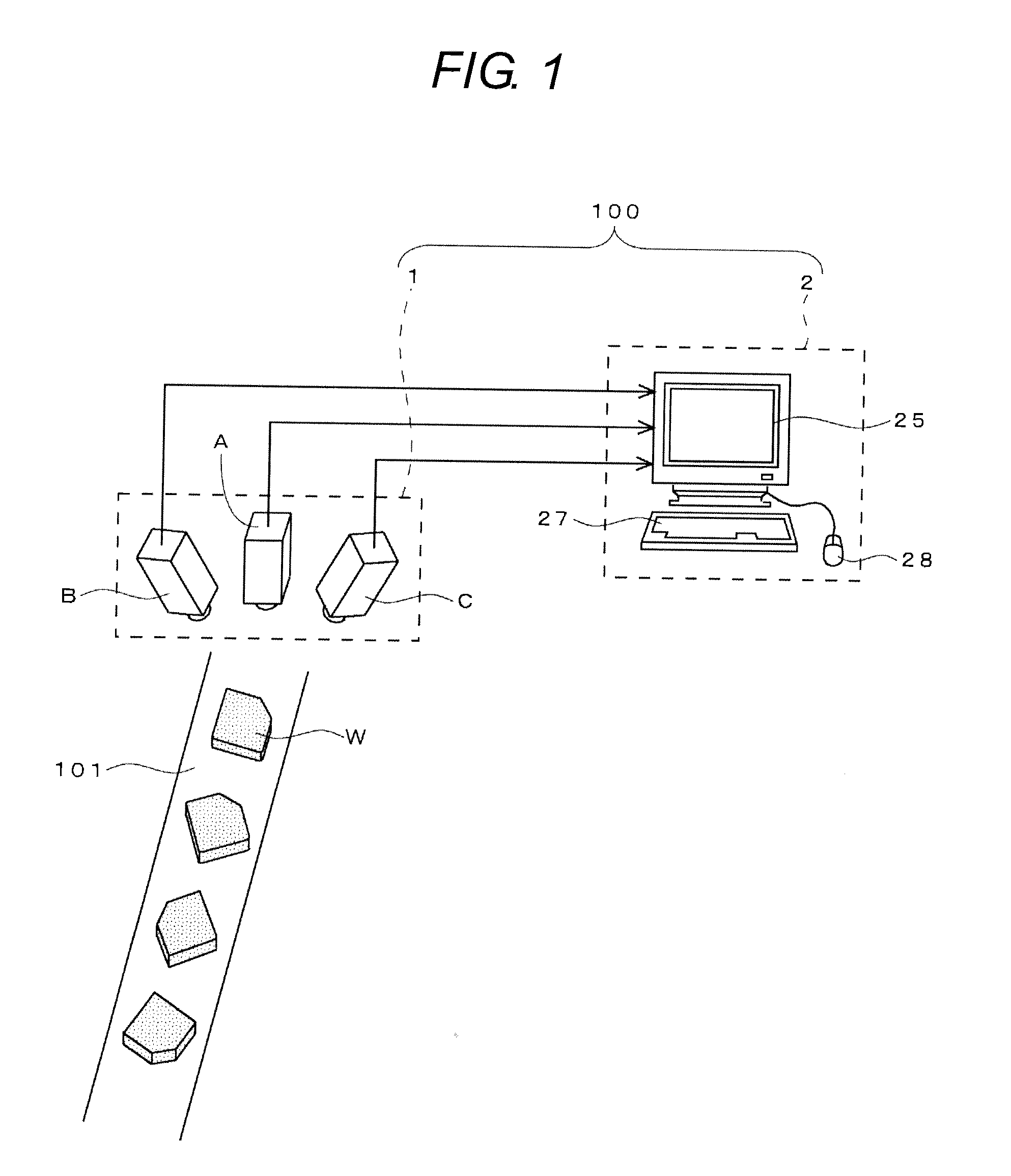Method For Displaying Recognition Result Obtained By Three-Dimensional Visual Sensor And Three-Dimensional Visual Sensor
a three-dimensional visual sensor and recognition result technology, applied in the field of three-dimensional visual sensors, can solve the problem that the shape of the three-dimensional model cannot be properly expressed, and achieve the effect of enhancing the user-friendliness of the three-dimensional visual sensor and easy confirmation of the recognition resul
- Summary
- Abstract
- Description
- Claims
- Application Information
AI Technical Summary
Benefits of technology
Problems solved by technology
Method used
Image
Examples
Embodiment Construction
[0033]FIG. 1 illustrates an example in which a three-dimensional visual sensor 100 according to an embodiment of the invention is introduced to a production line of a factory.
[0034]The three-dimensional visual sensor 100 of the embodiment is used to recognize a position and an attitude of a workpiece W (morphology is simplified for the sake of convenience) conveyed by a conveying line 101 in order to assemble the workpiece W in a predetermined product. Information indicating recognition result is transmitted to a robot controller (not illustrated) of a robot (not illustrated) disposed downstream in the conveying line 101, and the information is used to control an operation of the robot.
[0035]The three-dimensional visual sensor 100 includes a stereo camera 1 and a recognition processing device 2 that is disposed near the conveying line 101. The stereo camera 1 includes three cameras A, B, and C that are horizontally disposed above the conveying line 101. The central camera A is dispo...
PUM
 Login to View More
Login to View More Abstract
Description
Claims
Application Information
 Login to View More
Login to View More - R&D
- Intellectual Property
- Life Sciences
- Materials
- Tech Scout
- Unparalleled Data Quality
- Higher Quality Content
- 60% Fewer Hallucinations
Browse by: Latest US Patents, China's latest patents, Technical Efficacy Thesaurus, Application Domain, Technology Topic, Popular Technical Reports.
© 2025 PatSnap. All rights reserved.Legal|Privacy policy|Modern Slavery Act Transparency Statement|Sitemap|About US| Contact US: help@patsnap.com



